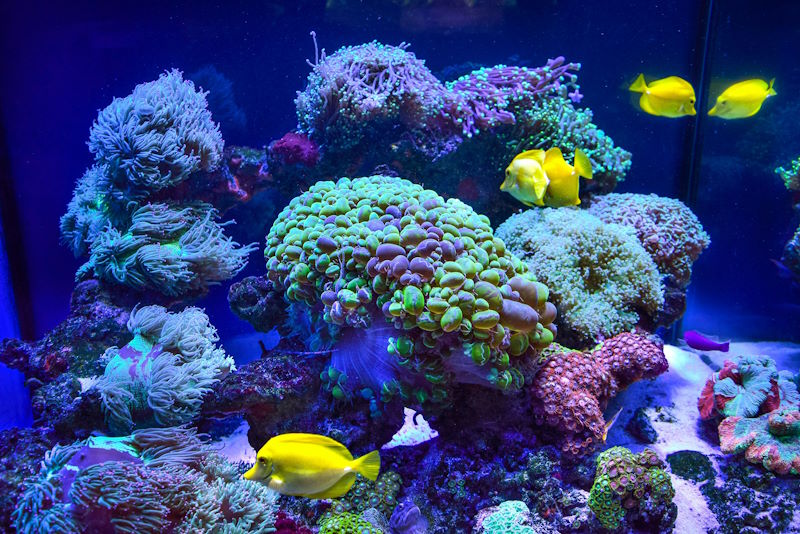Top Care Tips For Adding Red Mangroves To Your Aquarium

Adding Red Mangroves (Rhizophora mangle) to your aquarium can transform it into a thriving, unique ecosystem while promoting coastal conservation efforts. At Save Mangroves Nursery, we are passionate about helping you integrate these remarkable plants into your aquatic environment. Here are the top care tips to ensure your Red Mangroves flourish in your aquarium.
Understanding Red Mangroves
Red Mangroves are coastal plants native to tropical and subtropical regions. Known for their distinctive stilt roots, they provide essential ecological benefits, including shoreline stabilization, habitat for marine life, and water filtration.
Fun fact: Red Mangroves are often called “walking trees” because their stilt roots can make it look like they are walking across the mud!
1. Optimal Water Quality
Maintaining high water quality is crucial for the health of Red Mangroves. These plants thrive in brackish water conditions, so aim for a specific gravity (salinity) of 1.015 to 1.025. The pH should be kept between 7.5 and 8.2. Regular water testing and adjustments ensure the water parameters remain stable, preventing stress and promoting healthy growth.
Did you know? Red Mangroves can filter out salt through their roots, allowing them to thrive in salty environments!
2. Adequate Lighting
Red Mangroves require moderate to high lighting, simulating the sunlight they receive in their natural environment. LED lights with a full spectrum, including both blue and red wavelengths, are ideal. Position the lights to provide 8-10 hours of illumination daily, ensuring the mangroves receive enough light for photosynthesis and growth.
Fun fact: Mangroves have been found to use a form of photosynthesis that allows them to store oxygen for use during high tide when their roots are submerged!
3. Stable Temperature
Mangroves prefer stable, warm temperatures. Keep the water temperature between 72°F and 82°F (22°C to 28°C). Sudden temperature fluctuations can stress the plants and inhibit their growth. Using a reliable aquarium heater and thermometer helps maintain consistent temperatures.
4. Suitable Substrate
A sandy substrate is ideal for Red Mangroves. It allows for proper root development and water circulation. Mangroves have specialized roots that anchor them firmly in the substrate while allowing them to absorb nutrients from the water. Ensure the substrate depth is sufficient to support the roots without restricting their growth.
Interesting fact: Mangroves can also develop aerial roots, which help in gas exchange when submerged roots cannot get enough oxygen!
5. Gentle Water Circulation
Red Mangroves benefit from gentle water circulation, similar to the coastal environments they naturally inhabit. Use a powerhead or low-flow filter to create moderate water movement around the plants. Avoid strong currents that can damage the delicate roots and leaves.
6. Nutrient-Rich Environment
Mangroves thrive in nutrient-rich environments. Regular water changes and the use of a balanced aquarium fertilizer provide essential nutrients like nitrogen, phosphorus, and potassium. Mangroves also benefit from trace elements such as iron and magnesium. Be mindful not to over-fertilize, as excessive nutrients can lead to algae blooms and water quality issues.
Fun fact: In their natural habitats, mangroves can trap sediments and organic matter, which enriches the surrounding water with nutrients!
7. High Humidity
Maintaining high humidity around the mangrove leaves is essential. In their natural habitat, mangroves experience high humidity levels due to their proximity to water. To replicate this, consider covering the aquarium with a glass or acrylic lid to reduce evaporation. Misting the leaves with fresh water daily also helps maintain the necessary humidity levels.
8. Regular Pruning
Pruning is a critical aspect of mangrove care. As the plants grow, they may develop dead or yellowing leaves. Regularly trim these leaves to encourage new growth and maintain the plant’s health. Pruning also helps control the size of the mangroves, ensuring they do not outgrow the aquarium space.
Interesting tidbit: Mangroves are resilient and can regrow leaves and branches even after significant pruning, making them easy to shape!
9. Compatibility with Aquarium Inhabitants
Red Mangroves are generally compatible with a variety of aquarium inhabitants, including small, peaceful fish and invertebrates. However, it is essential to ensure that the plants and animals coexist harmoniously. Some fish species may nibble on the mangrove roots or leaves, causing damage. Monitor the interactions and make necessary adjustments to maintain a balanced environment.
Fun fact: Mangrove forests are known as “nurseries of the sea” because they provide shelter for many juvenile fish and invertebrates!
10. Gradual Acclimatization
When introducing Red Mangrove propagules to your aquarium, gradual acclimatization is crucial to prevent shock. Slowly adjust the propagules to the aquarium’s water parameters over several hours. This process helps the plants adapt to their new environment, reducing stress and promoting successful establishment.
Why Choose Save Mangroves Nursery?
At Save Mangroves Nursery, we are dedicated to promoting the conservation and restoration of coastal habitats. Our Red Mangrove propagules are carefully cultivated to ensure they are healthy and ready for your aquarium. By choosing our nursery, you are supporting efforts to preserve vital ecosystems and contributing to a more sustainable future.
Conclusion
Integrating Red Mangroves into your aquarium is a rewarding endeavor that enhances the beauty and health of your aquatic environment. By following these top care tips, you can ensure your mangroves thrive, creating a vibrant and sustainable ecosystem.
At Save Mangroves Nursery, we are here to support you every step of the way, providing expert guidance and high-quality propagules to help you achieve success.
For more information and to explore our range of mangrove products, visit our blog. Together, we can make a difference in preserving our precious coastal habitats.
How Do I Choose My Very First Plant?
So you have learned about the incredible benefits of adding mangrove plants to your tank, but you still don’t know which exact plant to add to your specific tank size?
Don’t worry, because we’ve created an easy Step-by-Step guide to help you with your selection process.
Click the button below to find out which plant is perfect for your aquarium.

 Cart is empty
Cart is empty 
